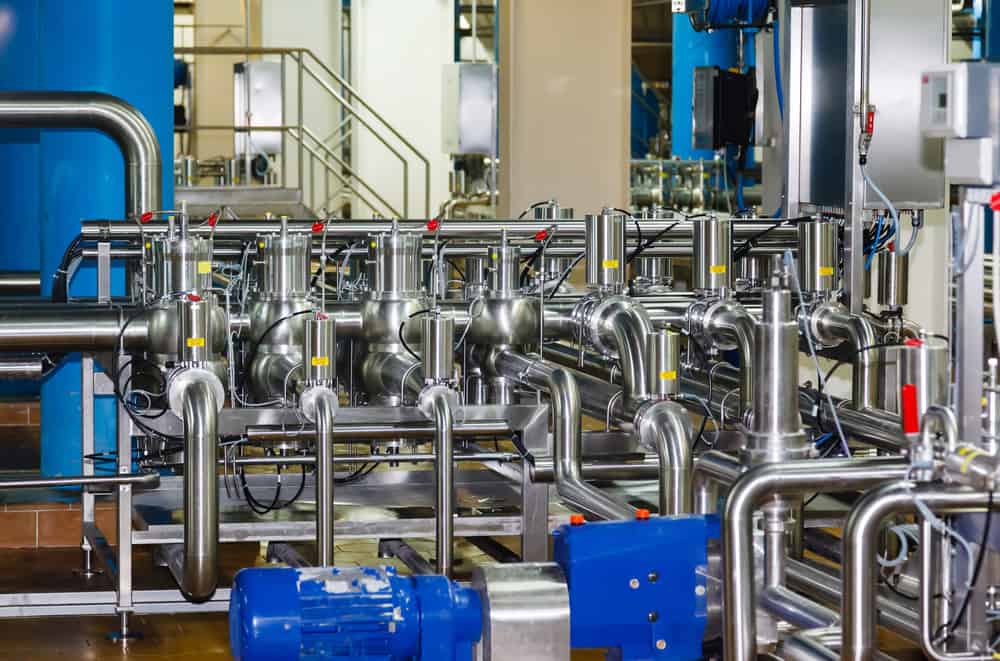
In addition to water and shelter, food is one of the three pillars on which the sustainment of life depends: it is our energy source. While the basic forms of food processing developed several millennia ago, the ability to process food at scale owes its start to the revolutionary changes in industry that occurred during the 19th and 20th centuries.
Today, virtually all nations depend on the ability to import and export processed food for sustenance and revenue. And food processing itself requires storage, transport, and storage vessel welding. Assembly of these systems typically relies on tubing for transport. When welders connect tubes for biopharmaceutical or food processing applications where contamination must be avoided, the process is known as sanitary tube welding.
Let’s clearly define sanitary tube welding and consider the best way to perform this type of assembly.
What is Sanitary Tube Welding?
In order to answer this question accurately, a few definitions are needed.
Definitions
Sanitary or hygienic: Sanitary is the standard term when referring to piping either drinking water or sewage. When related to food or biopharmaceutical processing, hygienic is preferable.
Sanitary tube: A sanitary tube is a tube with a size specification equal to its OD. Pipes, on the other hand, are measured in Nominal Pipe Size, which consists of a schedule number for different IDs. While tubes are also distinguishable by unique IDs, size is still measured according to the OD.
Sanitary weld : A sanitary weld describes the joint resulting from a tube welding process intended to minimize the possibility of contamination that would lessen the sanitary condition of a tube’s contents.
Given the above definitions, we can understand sanitary tube welding as a welding process that incorporates sanitary (or hygienic) processes, size specification standards, and weld guidelines to create an acceptable sanitary weld for a tubing application. Let’s take a look at the most important considerations for sanitary tube welding in the biopharmaceutical and food processing industries.
Major Considerations for Biopharma and Food Tube Welding
Several considerations make sanitary welding more challenging than many other types of welding. These include regulations and standards, corrosion and contamination avoidance, and cleaning-in-place procedures. And each of these considerations affects the tube welding for biopharma and food processing.
Regulations and Standards to Know
Contamination, a premium concern for sanitary welding, must be avoided as much as possible. Depending upon the type and levels of contamination, severe health issues and even fatalities could occur. Regulations and standards exist to help prevent harmful outcomes like these. The most important of standards for sanitary tube welding include the following:
Important Sanitary Tube Welding Standards
- AWS D18.1 Specification for Welding of Austenitic Stainless Steel Tube and Pipe Systems in Sanitary (Hygienic) Applications
Requirements for GTAW of austenitic stainless steel tubes with an OD of ¼” or larger, intended for use in newly constructed systems that handle products consumed by people and animals, are covered.
- AWS D18.2 GUIDE TO WELD DISCOLORATION LEVELS ON INSIDE OF AUSTENITIC STAINLESS STEEL TUBE
This document serves as a guide to visually compare the surface discoloration criteria for stainless steel tube hygienic welds.
- AWS D18.3 Specification for Welding of Tanks, Vessels, and Other Equipment in Sanitary (Hygienic) Applications
This standard covers requirements for welding other stainless steel and nickel alloys used in sanitary assemblies; including nozzles and other openings for tubes, but not the tubes used for transport.
Avoiding Corrosion and Contamination
The standards listed above help preserve the contents of sanitary tubes and prevent contamination. For this reason stainless steel, which is highly resistant to corrosion, has become the standard for biopharma, food, and other sanitary transport systems. Aluminum and copper may be used in certain cases, as they are cheaper than steel, but these are exceptions.
When welding tubing for biopharma systems, the process is more difficult because the increased tube size (which may be 4” or greater) requires larger tooling and longer preparation time. Additionally, tack welding is necessary to hold the pipe in place for manual welding.
Cleaning-in-place (CIP)
Another requirement—and challenge—for sanitary tube welding is the need for cleaning-in-place or CIP. Sanitary tubes are often installed in walls, ceilings, roofs, corners, or other out-of-the-way locations where disassembly and cleaning are impossible. Therefore, stainless steel tubes are employed. These assemblies, if welded properly, do not leak and are virtually maintenance-free. These tubes can be cleaned by flushing without the need for removal.
How to Best Weld Sanitary Tubes
The key standards to follow for sanitary or hygienic tube welding provide requirements for using GTAW or TIG welding. TIG welding is popular because it consistently produces the high-quality welds necessary for sanitary systems. And orbital TIG welding in particular, which has a rejection rate of less than one percent (as opposed to 10 percent or greater for manual welding), is preferred. In addition, you can achieve the best sanitary welds by following these guidelines:
- Know and follow regulations and standards
- Follow good stainless steel safety tips
- Select the best tube welding machine for your project
- Institute an effective maintenance schedule for your equipment
Sanitary tube welding is a critical aspect of biopharmaceutical and food processing as tube welds must prevent external contamination, as well as contaminants that could be introduced from the welds themselves. Additionally, the welds must not leak. This type of assembly demands that you apply the best process and use the best equipment.
Arc Machines, Inc. provides high-quality automated orbital GTAW welding equipment and expertise to aid you in sanitary tube welding. For inquiries regarding products, contact sales@arcmachines.com. For service inquiries, contact service@arcmachines.com. Arc Machines welcomes the opportunity to discuss your specific needs. Contact us to arrange a meeting.




